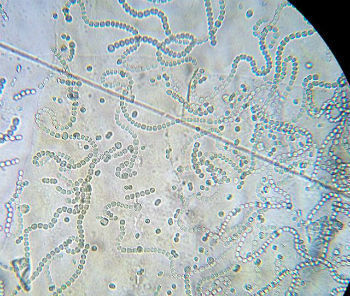To understand what they are stem cells, let's first understand how they arise.
These cells appear in the following way: the sperm fertilizes the egg, giving rise to what we call the zygote. The zygote undergoes mitosis, giving rise to a “ball of cells”, which differentiate into germinal leaflets, which then differentiate into tissues and organs of the organism.
These cells originated from the mitoses of the zygote are the stem cells, which are also called mother cells or stem cells. They are very simple cells that have the ability to differentiate into any type of cell, forming any type of tissue and can be classified into embryonic stem cells and adult stem cells. At embryonic stem cells are taken from embryos and are classified into:
● Totipotent stem cells – the human body is made up of various types of tissue and this type of stem cells it is able to differentiate into any of them, including placenta and embryonic attachments. the cells totipotent they are found in the first divisions of the embryo, around the third or fourth day after fertilization, when the embryo has approximately 32 cells.
● pluripotent stem cells – are also able to differentiate into any tissue in the body, with the exception of the placenta and embryonic adnexa. They are removed from the embryo around the fifth day after fertilization, when the embryo has approximately 64 cells.
the calls stem cellsadults are taken from the already formed organism, for example, bone marrow, liver, blood, the umbilical cord, placenta etc. They are called adult stem cells because they no longer have a high capacity for differentiation.
In countries where studies with stem cells are allowed, they are being used, on an experimental basis, in the treatment of various diseases such as cancer, heart disease, liver disease, Alzheimer's, diabetes, kidney disease, among many others. However, the use of embryonic stem cells it is still very controversial, because for the removal of these cells, the embryo has to be destroyed and for many the embryo is considered a life that is in formation.
Do not stop now... There's more after the advertising ;)
Researchers at the Butantan Institute in São Paulo were able to obtain stem cellsembryonic from the baby tooth and according to the researcher Nelson Lizier, they are already being used in patients with corneal lesions. It is important to emphasize that this research is in the testing phase and that the people who are receiving these stem cells are voluntary. According to the researcher, these cells could also be used in retinal regeneration, arteriosclerosis, heart disease, bone regeneration, cartilage and dental implants. like these stem cells are removed from the pulp of the baby tooth, which is usually thrown away or kept by the parents, there are no ethical issues that prevent their use and handling.
Another survey, also carried out in Brazil, more precisely by researchers from the National Institute of Cardiology (INC) and the Institute of Biophysics of the Federal University of Rio de Janeiro (UFRJ), managed to transform the menstrual blood cells in embryonic stem cells. The blood that is shed by women every month is capable of saving many lives and curing countless diseases.
As we have seen, the use of stem cells in medicine is very promising and the scientists who work with them are very confident that doctors will be able to do more for their patients.
By Paula Louredo
Graduated in Biology
Would you like to reference this text in a school or academic work? Look:
MORAES, Paula Louredo. "Stem cells"; Brazil School. Available in: https://brasilescola.uol.com.br/biologia/celula-mae2.htm. Accessed on June 27, 2021.


